The future of shopping is social
Lynn Teo, director and head of user experience at AKQA New York, explores ideas for new social commerce applications from an experience designer's perspective
Social commerce has most often been defined as the experience of "bringing shopping where people connect" and "bringing connection where people shop". Coupling engagement, our natural sharing and collaborative instincts, and affinity with like-minded people forms the basis of this new take on shopping.
Using Facebook’s Open Graph f-commerce API
Communities provide relevance and context by their very nature, be it through commonalities in tastes, geography/location, or past behaviours.The “off-Facebook” f-commerce model allows for these similarities to be harnessed, integrated, and prominently displayed on a retailer’s site by pulling in recommendations and “likes”. On Levi’s Friends Store, for instance, consumers can view products “liked” by friends or by the larger Levi’s fan community if the user logs in using Facebook credentials. Relevant data surfaced in the consumer’s shopping experience helps to enrich it, simplify choice, and provides a curated view of the merchandise.
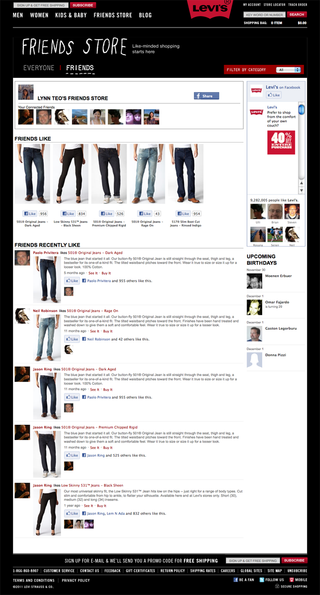
Consumers’ real world shopping process
Beyond the social graph, opportunities to extend and further enrich the social commerce experience may be gleaned by observing the real world shopping and social behaviours of consumers specific to products. The experience of buying a new dishwasher is dramatically different from that of purchasing a book. The former is likely to require online research (specs, price, reviews) followed by one or multiple in-store visits; the latter may only require reading a few book reviews before the consumer hits the “Buy” button on an online book e-tailer.
More often than not, interactions will inevitably occur across a multitude of channels – in store, online, on mobile devices, word of mouth, news feeds on social networks, and so on. Some touchpoints are visited once in a predictable sequence; some are visited in repeated loops before purchases are made (eg try-before-you-buy products such as cosmetics).
An experience designer’s approach is first to understand the purchase journey through the lens of the consumer, seek out barriers or missed opportunities in the purchase funnel, and then determine how social elements may be introduced to close the gap in the shopping process either before, during, or after the shopping activity. Here are three areas in which to seed inspiration...
1. Mix-n-match social commerce channels
Discussions around social commerce thus far have dwelled on single-channel integration points. ASOS, for example, supports a full Facebook store (bringing commerce to social channel); Wetseal, a teen apparel retailer with brick-and-mortar stores in the US hosts a real-time “shop with me” chat/interactive shopping experience within their ecommerce site (bringing social capabilities to commerce).
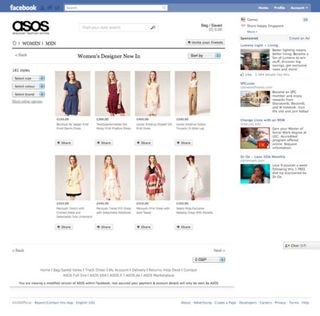

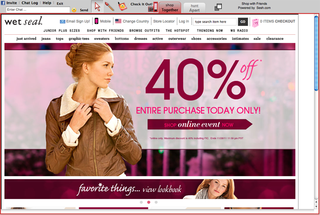
An opportunity that has yet to be explored is an experience designed to serve the needs of a user on the web channel by providing access to a collaborative, real-time interaction with other customers who are at the brick-and-mortar store. Consumer check-in’s and points programs can be integrated with the online channel to allow for participation of in-store customers in real time, driving up engagement and a more intimate shopping experience for the offline user. Such interactions are best applied to products that benefit from in-person, real-time reviews such as apparel, lower price-point home furnishings, and cosmetics. In these scenarios, brief dialogue or confirmation of colour, texture, and so on, may be what’s needed to sway the online buyer’s decision to buy vs abandoning the purchase.
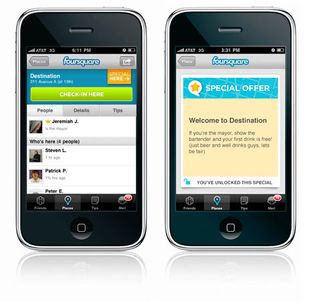
This collaborative social commerce paradigm works best when there is an established, trusting, and participatory community of avid shoppers and enthusiastic contributors. The high participation rate of real-time fashion review/comments site (Fashism.com + mobile app, WhoWhatWear) is testament to the potential that collaborative, real time feedback holds in influencing purchase decisions.
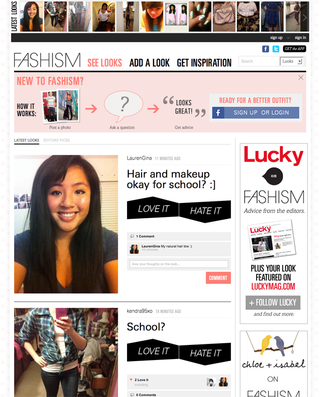
2. Interest graph personalisation
Recent developments in where social commerce is headed next centre around more esoteric purchase influencers such as taste, preference, and style. While functional aspects of ecommerce have well been captured by carefully developed taxonomies and algorithms (think Amazon, and to some extent Endeca faceted metadata), the new wave of serendipitous discovery will be powered by interest graphs that capture affinities, similarities across “like minded individuals”, and people whose opinions a consumer trusts.
Pandora, Netflix, Hunch, and Kaboodle are all great examples of interest graphs at play, where learned tastes and user participation over time evolve into a smart “human-like” recommendations. Advances in this area of social commerce don't just create a platform for sharing reviews, ratings, or better prices through group buying. They create moments of unexpected delight and relevance that not only engage consumers to shop more easily (thereby increasing size of cart and purchase totals), but also develop deeper and more loyal relationships with brands.
Get the Creative Bloq Newsletter
Daily design news, reviews, how-tos and more, as picked by the editors.
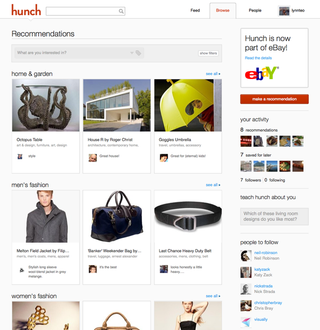
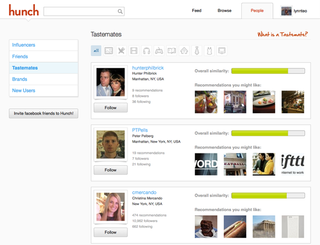
WalmartLab’s acquisition of Kosmix, a social genome project built on the fundamentals of using shared topics, relationships between people, places, events, “likes”, “follows” and comments to present highly personalised experiences to consumers is certainly one to watch in the coming months.
The personal shopper experience in the real world is a close parallel to interest graphs. These specialist shoppers learn brand affinities, style preferences and tastes of their clients. That high touch client servicing in turn makes them a trusted resource for pulling together looks, recommending new trends that are within the customer’s taste “parameters” and throwing in unexpected but delightfully interesting items for consideration.
3. Incentivising loyal brand advocates
Rewarding product advocates and recommenders with higher value incentives presents the next frontier of social commerce. Attribution of recommendations and tracking consumer action through to conversion is increasingly used as a barometer of a consumer’s influence over their community. Gloople’s social discount module allows incentives to be applied during checkout, and Shopsquad turns recommendations that are acted upon by other consumers into cash. These tactics ensure quality recommendations and provide clear incentives for consumers to collaborate to streamline the shopping process.
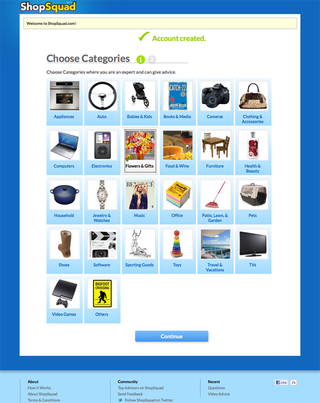
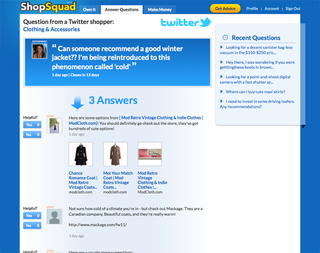
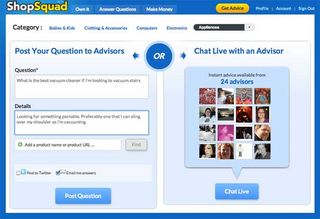
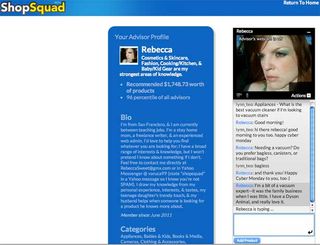
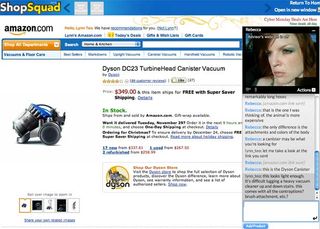
Product credits and loyalty programs have existed long before social commerce took off. The value of candid, actionable insights has increased to help consumers cut through the noise. Self-correcting mechanisms must be built into ecommerce environements to allow for inaccurate reviews to be fed back into the system even after conversion has occurred to benefit prospective customers down the road.
Conclusion
The landscape of social commerce could not be more exciting than it is today, given the maturity and ubiquity of social media, excitement and interest in product development (of mobile apps, web experiences and extensions) and a staggering 400+% growth in ecommerce over the last decade. Retailers are certainly taking note and challenging themselves to keep pace with consumers’ increasing appetite and demand for more immersive and engaging experiences.
Experience design holds the key in part to uncovering these moments of discovery and innovation, inspired by insights gleaned from an understanding of human behavior, and the opportunities that present themselves as businesses – some old, some new – compete for new ways to engage, enthrall, and reward its most loyal consumers.

Thank you for reading 5 articles this month* Join now for unlimited access
Enjoy your first month for just £1 / $1 / €1
*Read 5 free articles per month without a subscription

Join now for unlimited access
Try first month for just £1 / $1 / €1
The Creative Bloq team is made up of a group of design fans, and has changed and evolved since Creative Bloq began back in 2012. The current website team consists of eight full-time members of staff: Editor Georgia Coggan, Deputy Editor Rosie Hilder, Ecommerce Editor Beren Neale, Senior News Editor Daniel Piper, Editor, Digital Art and 3D Ian Dean, Tech Reviews Editor Erlingur Einarsson, Ecommerce Writer Beth Nicholls and Staff Writer Natalie Fear, as well as a roster of freelancers from around the world. The ImagineFX magazine team also pitch in, ensuring that content from leading digital art publication ImagineFX is represented on Creative Bloq.
